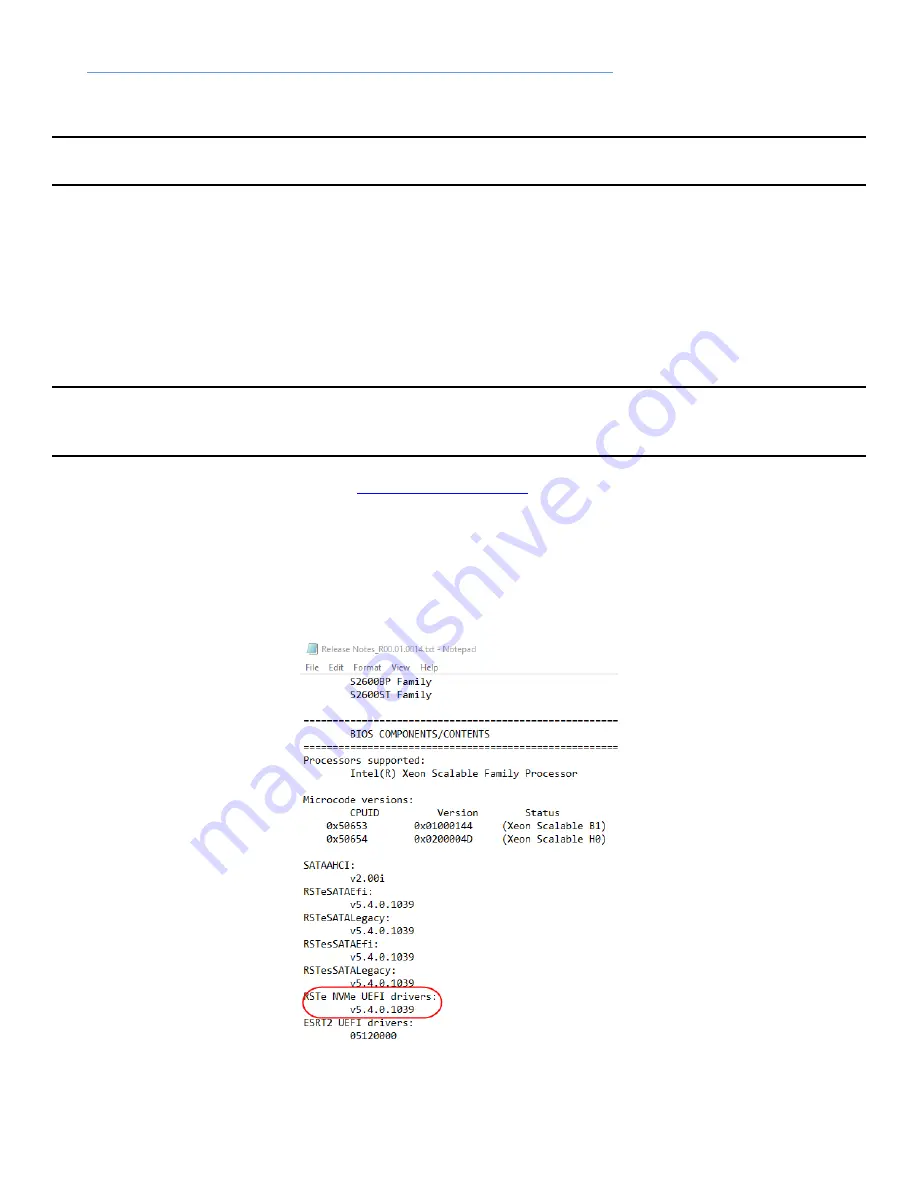
Intel® VROC Quick Configuration Guide
6
The
Firmware Package and LED Mode Toggle Tool for Intel® PCIe* Switches
package and the LED Management toggle tool. The package has readme files with instructions for each
component.
Note:
Not configuring LED management correctly will make the locate and fault drive LEDs not to work and
make difficult to identify and replace a faulty drive.
2.5
Drivers.
The Intel® VROC solution has two driver components: the pre-boot, or UEFI driver, and the OS driver. The
UEFI driver is embedded in the system BIOS and is referred to as the
RSTe NVMe UEFI driver
, while the OS
driver must be loaded at the OS installation time and is referred to as the
RSTe OS driver;
both contain
version numbers. The OS driver version can be equal or later than the UEFI driver version but not vice versa,
excepting for the Linux OS. If the system BIOS version is updating while the prior BIOS version has a newer
RSTe NVMe UEFI driver embedded, the RSTe OS driver must be updated first.
Note:
On a system with the Windows* OS installed and an Intel® VROC virtual drive present, the
Windows*
RSTe OS driver
version must not be prior to the
RSTe NVMe UEFI driver
version, otherwise unexpected
behavior may happen.
The RSTe OS driver can be found on the
Enter vroc into the field near the magnifier
icon, and it will show both Windows and Linux driver links.
The RSTe NVMe UEFI driver version embedded in the BIOS is documented in the corresponding BIOS
Release Notes for the SUP Package, look at the
“
BIOS COMPONENTS/CONTENTS
” section.
Below is an example of how the RSTe NVMe driver version is documented in the Release Notes file.
Figure 1. RSTe NVMe release note documentation style
For the UEFI driver version in the above example, the 5.4 or later RSTe OS driver must be used, but nothing
earlier than 5.4 would be supported.






















